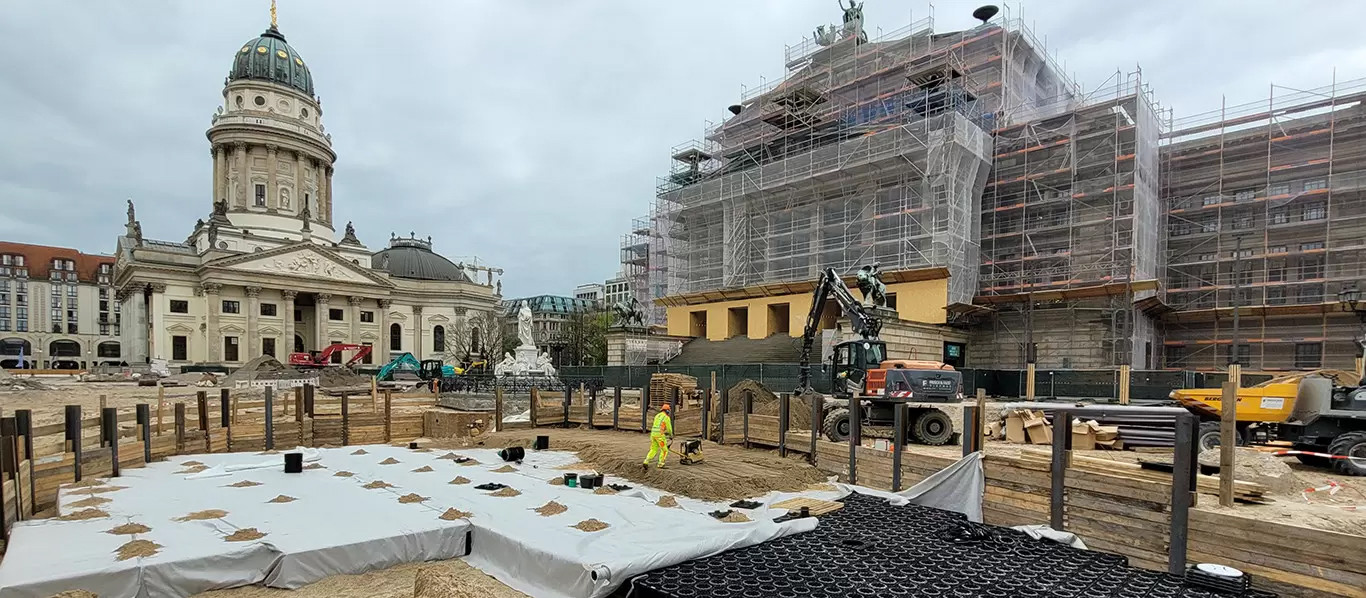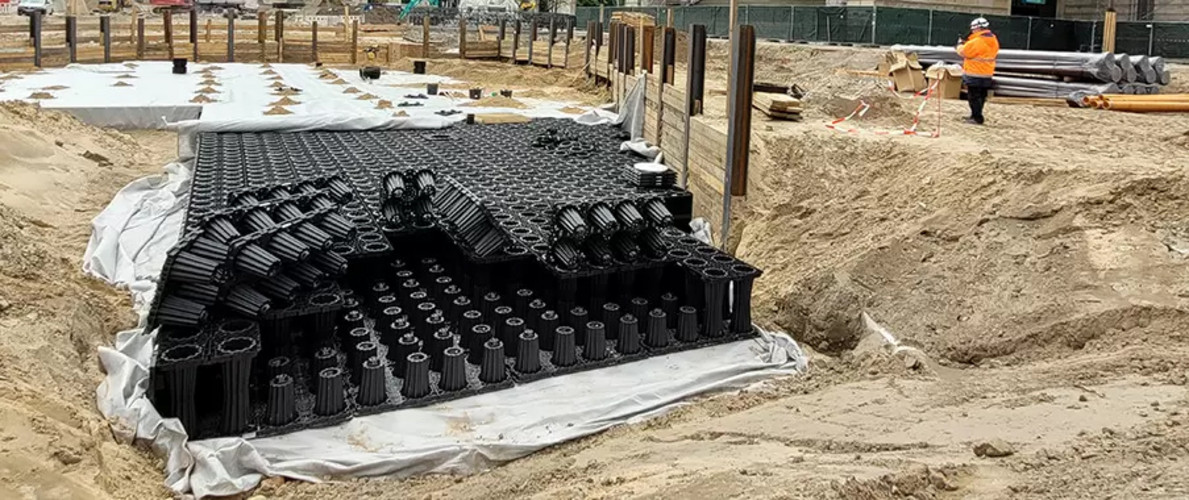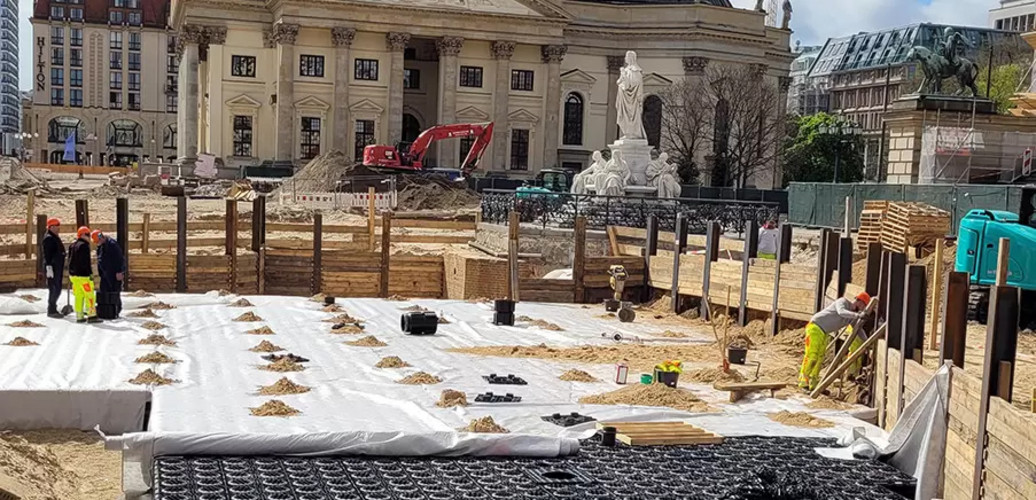More Than Just a Facelift
"In all highly dense, urban areas, including Berlin, heavy rainfall and heatwaves are increasing due to climate change. We, as Berliner Wasserbetriebe (Berlin Waterworks) and the city of Berlin, aim to reorient our approach to rainwater: moving from mere diversion to treatment plants towards decentralized infiltration," explains Christopher Repkow, Site Manager for cross-media network construction Berlin East at Berliner Wasserbetriebe. More rainwater that can orderly infiltrate in the city protects the urban greenery from drought damage and infrastructure from flooding. At the same time, it stabilizes the groundwater level and improves water quality because it reduces mixed water overflows from the sewer system into bodies of water.
Complex Preliminary Planning for Rainwater Infiltration
According to Berlin's Water Law, decentralized infiltration through active soil zones is mandated. However, in places like the Gendarmenmarkt, where there is a lack of unpaved free and green spaces, alternative system solutions are required. Their task is to replicate the natural water cycle, meaning to collect, absorb, purify, store, and gradually release rainwater into the soil layer. ACO GmbH in Büdelsdorf, one of the leading providers of such integrated drainage concepts, was involved early in the complex hydraulic calculations by the participating landscape architects. "For the necessary flood proof according to DIN 1986-100 and DWA-A 138, we based our calculations on the precipitation volumes of at least a 30-year rainfall event lasting 5 minutes according to the KOSTRA-DWD grid data," says Jan Witt, Application Technician at ACO. DIN 1986-100 and DWA-A 138 are German standards that provide guidelines on flood protection and drainage systems. Depending on the total area, catchment area, and slope of the square, the required capture and retention volume was determined, and the drainage channels and trenches were sized accordingly.
Monument-Appropriate and Stable: Box Channel with Cast Iron Grate
In the subsequent Europe-wide open tendering process, ACO was able to score with its assortment of channels and trenches specifically designed for climate-resilient rainwater management. Specified was a box channel with cast edge protection and a neutral longitudinal bar grate made of cast iron, which aligns with the original appearance. "The ACO PowerDrain Seal in not only meets the demanding design requirements of the conservationists. The robust channel body with the EPDM seal at the channel joint also withstands the loads of the temporarily highly stressed square without visible back supports," knows Jan Witt.
Low Installation Height – High Storage Volume
The trench system plays a central role in rainwater management at the Gendarmenmarkt. Through the fill bodies, the previously collected and substrate-filter purified rainfalls are controlled and released to the underlying soil layer. ACO won here again because the offered ACO Stormbrixx system precisely met the specific requirements of the large square. Due to its compact construction with a height of just 61 cm, installation is possible even with the relatively high groundwater level in Berlin, without falling below the minimum distance to the groundwater level. The six trenches in total have a storage capacity of 480 m³ - sufficient to be prepared even for a 30-year rainfall event.
With their modular construction, the units can be easily integrated into the underground piping and flexibly adjusted to existing space conditions. So, the basic elements are simply placed around flagpoles, lights, and the prominent Schiller monument. Christopher Repkow did not miss the opportunity to test the handling himself. "No heavy machinery is needed for the lightweight, handy plastic elements. Using the stackable mechanism, I was able to connect them with a click without much effort." Once all six elements are laid as load-bearing units, the installation of the upstream cleaning stages and drainage channels can begin. Equipped with a new natural stone pavement made of granite, gneiss, and basalt, the Gendarmenmarkt is scheduled to be accessible to the public again in time for Christmas 2024, thus becoming a lighthouse model for climate-resilient redesign of public spaces.


